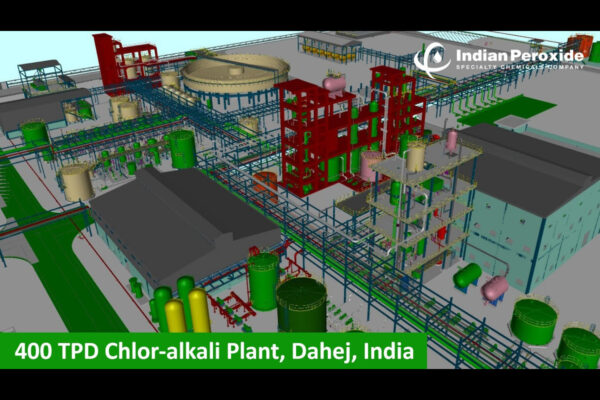Decoding Bitumen: Choosing the right grade for India’s diverse climates
by Prashant Garg, Founder & MD, PP Softtech
Bitumen plays a crucial role in road construction, acting as a binding agent that impacts durability, flexibility, and safety. It is made during the refining of crude oil, and though it is used as the binder in road construction, it is not one size fits all, because its performance changes depending on temperature, traffic load, and weather. In a country like India, where one state may face scorching heat and another heavy rains or snow, choosing the right grade of bitumen becomes an important step in the road construction.
The strategic role of bitumen in road infrastructure development
As the bitumen directly affects the longevity and safety of the roads, understanding its main properties can help to ensure that the final infrastructure can tolerate different stress levels, climate extremes, and traffic variations, especially in different geographical areas of India.
A major feature of bitumen is its hardness or softness, which is measured by a simple test. A needle is pressed into bitumen under controlled conditions, and how deep it goes tells us about its stability. This helps makers to know whether it will remain firm in summer or crack in winter cold. The next important feature is its viscosity, essentially, how thick or fluid the bitumen becomes when heated. To handle heavy vehicles without shifting, the bitumen must be thick enough, but it is quite easy to pour and spread when heated during road construction. Then there is a soft point, the temperature where the bitumen starts melting. In many parts of India, the surface of the road can be extremely hot, so the bitumen needs to be solid at high temperatures to avoid deformation.
Flexibility is another important factor. This tells us how much a bitumen can stretch before breaking up. The roads expand and contract due to heat and cold, and if bitumen cannot handle that movement, cracks will form. And lastly, flash point, which is a particular temperature at which the bitumen may catch fire. And as the bitumen needs to be heated before using it, it is important that it does not pose a risk of fire during handling.
Sourcing bitumen in India: A mix of domestic supply and global trade
In our country, bitumen is mostly produced by major government-owned companies. These refineries supply various grades of bitumen according to the needs of various fields and projects. Sometimes, the type of bitumen required for a project may not be locally available. In such cases, bitumen is imported from other countries, especially from places such as Iran and Singapore, which are known for the production of quality materials. Many private suppliers in India act as a bridge between manufacturers and road contractors, ensuring that the correct grade of the bitumen reaches the construction sites. They help contractors to get the correct grade of bitumen and ensure that it meets national standards. Good suppliers always provide quality testing reports and certificates that are fit for bitumen use.
Whether it is sourced from within India or brought from abroad, one thing that matters the most is that the bitumen should be according to the needs of the project. For example, it should be able to handle the local weather; the amount of traffic is expected, and it should be long lasting.
An overview of bitumen grading systems in India
The bitumen comes in separate grades, and these grades are decided on the basis of how bitumen behaves under some tests. In India, one of the older and still widely used methods is called penetration grading. In this system, the grade is based on how deeply controlled a needle can go into the bitumen. For example, 60/70 grades means that the needle goes between 60 and 70 tenths of one millimeter. This helps engineers understand that the bitumen is hard or soft, which matters for how it will perform on the road. But with India’s changing climate and increasing pressure from more vehicles, a new system called viscosity grading is now becoming more popular.
In this system, the bitumen is marked as VG-10, VG-20, VG-30, or VG-40. More numbers and thicker and more resistant bitumen are for heat and pressure. This gives a better idea of how the bitumen will behave on the road, especially under traffic and high temperatures. There are also other types like performance-grade bitumen and oxidized bitumen. These are mostly used for special projects like waterproofing, bridges, or industrial surfaces. Moreover, in recent times, there’s another method that is gaining attention in India, the AH grading system (Asian Hot). Grades like AH-70 or AH-90 combine both penetration and viscosity qualities, giving a more balanced performance view.
Selecting the right bitumen for India’s varied climatic zones
There are all kinds of weather in India, from hot deserts in the west to cold mountains in the north. Because of this, it is important to choose a bitumen grade to suit the local climate. For most regions of India, 60/70 penetration grade works well. It gives a good balance between being firm enough to handle heat and being soft enough to avoid cracking in the cooler season. In warm areas, where the road surface can be extremely hot, VG-30 or VG-40 are better. They can handle heat better and are less likely to be soft or damaged under heavy traffic. In cold areas, VG-10 or 80/100 penetration grades can be used, as they remain more flexible and are less likely to crack. For areas with too much rainfall, such as during a monsoon, oxidized bitumens such as 85/25 or 90/15 are useful. It opposes water and remains stable with changes in temperature.
Market trends: High-demand bitumen Grades in Indian projects
Of all the available grades, 60/70 penetration grades are still most commonly used in India. It is widely reliable for highways, city roads, and rural connections. It performs well in most situations and is easy to work with. However, many construction projects are moving towards viscosity grades, especially VG-30 and VG-40. They are used more on expressways, industrial roads, and busy flyovers, where durability and heat resistance are more important. For large, more complex projects, such types as bridges or high-trafficking urban roads, oxidized or performance-grade bitumen are gradually becoming more popular. They offer more power and a long life, demanding modern infrastructure. With better road-building technology and the need for roads that last longer with less repair, the demand for high-performance bitumen is only growing.
Key technical parameters that define Bitumen quality
To check the grade and quality of the bitumen, several laboratory tests are performed.
- One of the original tests is a penetration test, which tells us how soft or rigid the bitumen is. It helps to decide where it can be used on the basis of local weather.
- Next, the viscosity test checks how easily the bitumen flows at high temperatures. It is important to know how it will handle heat and heavy vehicles.
- Another test is a soft point test, which indicates the temperature at which bitumen begins to melt. Bitumen with high soft points is better for warm areas.
- The ductility test shows how much the bitumen can stretch without breaking. This helps to ensure that the roads do not crack if the weather expands and contracts.
- Flash point tests are also important, they tell us which temperature can catch a bitumen fire, which matters for safe handling during road construction.
- There is also a solubility test, which checks how pure the bitumen is. If it dissolves well in some fluids, it means that the quality is good and there are no harmful impurities.
All these tests simultaneously help makers decide whether the bitumen is a right fit for the road conditions in a given region.
Tags














